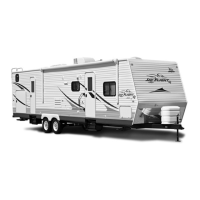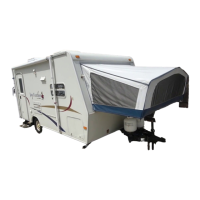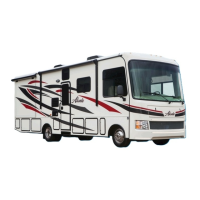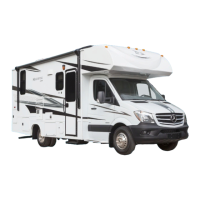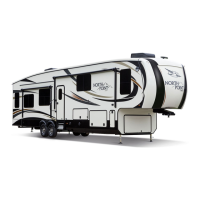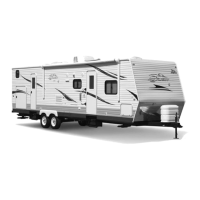When you are using your vehicle, check inflation pressure weekly to insure maximum tire
life and travel wear. Pressure should be checked when the tires are cold. During travel,
tires heat up and pressure increases. Do not bleed air from hot tires or your tires may
then be under-inflated.
NOTE: Cold tire inflation pressure is defined as a tire that has not been used for three
or more hours, or has been driven less than one mile. Tire inflation pressure of a hot tire
may show an increase of as much as 6 psi over a cold tire.
Tire pressure is the most important factor in the life and performance of your tires. Proper
inflation should be monitored closely. Failure to do so could result in the overheating of a
tire, which could result in a blowout. Inflation pressure should be as recommended by the
tire manufacturer or as the federal label for the recreation vehicle indicates.
CHANGING A TIRE
1. Keep the RV attached to the tow vehicle. Block the tire on the opposite side of the RV
from the tire you are changing.
2. Loosen the wheel lug on the tire you are changing before jacking up the RV. DO
NOT remove the lug nuts; only loosen them for ease of removal when the tire is off
the ground.
3. Locate the main frame rail of the trailer (it spans from front-to-back just inside the
tires).
4. To raise the RV, place the jack (hydraulic or screw) under the main frame rail. It must
be just ahead of the front tire or just behind the rear tire.
Tire wear should be checked frequently. Once a wear pattern becomes firmly
established in a tire it is difficult to stop, even if the underlying cause is
WARNING
Do not use the stabilizer jacks to support the RV while under the vehicle or changing
tires. The stabilizer jacks are designed as a stabilizing system only. Do not use the
stabilizer jacks as a jack or in conjunction with a jack. Attempts to change tires
while supporting the RV with the stabilizer jacks could result in
damage to the RV
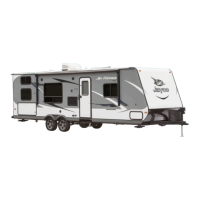
